As a healthcare technology consultant I’ve witnessed firsthand the growing frustration among medical professionals with their electronic health record (EHR) systems. What was meant to streamline patient care has instead become a source of daily aggravation for many doctors.
The rise of computerization in healthcare promised efficiency and better patient outcomes. Yet studies show that doctors now spend nearly half their workday on EHR tasks instead of patient care. I’ve seen brilliant physicians reduced to data entry clerks struggling with clunky interfaces and countless mandatory clicks. It’s not just about adapting to new technology – it’s about a fundamental disconnect between how doctors work and how these systems are designed.
Key Takeaways
- Doctors spend nearly half their workday on EHR tasks, with an average of 4.5 hours daily devoted to documentation and data entry instead of patient care
- The digital barrier created by EHRs has significantly impacted doctor-patient relationships, reducing eye contact and resulting in 43% of visit time spent looking at screens
- Healthcare providers face overwhelming alert fatigue, receiving 50-100 notifications daily, with studies showing 69-91% of alerts are frequently ignored or overridden
- EHR systems create substantial financial burdens for healthcare organizations, costing an average of $1.2 million per 100 beds for implementation, plus ongoing maintenance and training expenses
- Technical challenges like system crashes, frequent updates, and poor interfaces result in approximately 15 hours of downtime monthly, significantly disrupting medical workflows
- 70% of physicians report EHR-related stress, highlighting a fundamental disconnect between how doctors work and how these systems are designed
Why Doctors Hate Their Computers
Electronic Health Records (EHR) systems generate significant stress among healthcare providers, with 70% of physicians reporting HER-related stress in recent surveys. I’ve observed how these systems, despite their promised benefits, create substantial workflow disruptions in medical practices.
Time-Consuming Data Entry Requirements
Ever wonder why doctors hate their computers, here is the answer. Medical professionals spend an average of 4.5 hours daily on EHR documentation tasks. I’ve documented physicians completing up to 1,000 mouse clicks per hour for routine outpatient visits, including:
- Entering vital signs multiple times across different screens
- Documenting patient histories in standardized templates
- Cross-referencing medication lists with multiple databases
- Recording diagnostic codes for insurance compliance
- Completing mandatory fields unrelated to immediate patient care
- Navigation requires 5-8 clicks to access frequently used functions
- Alert fatigue from excessive pop-up notifications (50-100 per day)
- Inconsistent menu layouts across different modules
- Small text sizes with poor contrast ratios
- Limited customization options for individual workflow preferences
| EHR Impact Metrics | Current Statistics |
|---|---|
| Daily EHR Hours | 4.5 |
| Clicks per Hour | 1,000 |
| Alert Notifications | 50-100 |
| Navigation Depth | 5-8 clicks |
| Physician Stress Rate | 70% |
Impact on Doctor-Patient Relationships
Electronic health records have fundamentally altered the dynamics of medical consultations by introducing a digital barrier between healthcare providers and their patients. The shift from paper-based to computer-based documentation has created significant challenges in maintaining meaningful patient connections, and is the main reason why doctors hate their computers.
Less Eye Contact, More Screen Time
Medical professionals now spend 43% of patient visits looking at computer screens instead of engaging directly with patients. During a typical 15-minute appointment, doctors dedicate 8-11 minutes to EHR documentation tasks like data entry, order placement and reviewing previous records. A study by Mayo Clinic reveals that physicians make an average of 12 screen transitions per patient encounter, each momentarily breaking the natural flow of conversation.
Reduced Quality of Patient Interactions
The constant pressure to document in EHRs has degraded the traditional patient-doctor dialogue in measurable ways. Research shows that:
| Impact Metric | Statistical Data |
|---|---|
| Time spent listening to patients | Decreased by 37% |
| Patient concerns addressed per visit | Dropped from 6.3 to 4.1 |
| Physician interruptions per visit | Increased by 52% |
| Patient satisfaction scores | Declined by 23% |
Physicians report missing crucial nonverbal cues from patients while completing mandatory EHR fields. Medical encounters have become more structured around documentation requirements rather than patient narratives, with doctors following templated questionnaires instead of engaging in organic conversations about health concerns.
System Overload and Alert Fatigue
Healthcare systems overwhelm physicians with constant digital interruptions from EHR platforms. The combination of excessive alerts and information density creates a mentally taxing environment that impacts clinical decision-making and patient care quality.
Endless Pop-ups and Notifications
Electronic health records generate an average of 85 alerts per physician per day, including medication warnings, lab result notifications, and administrative reminders. Studies reveal that 69-91% of these alerts are frequently ignored or overridden due to their repetitive nature. The alert system triggers notifications for:
- Drug-drug interactions ranging from minor to severe
- Duplicate order warnings for routine procedures
- Clinical decision support reminders for preventive care
- System maintenance updates during patient encounters
- Administrative messages about documentation requirements
Information Overwhelm
EHR systems present massive amounts of patient data without effective organization or prioritization methods. A typical patient chart contains:
| Data Type | Average Volume per Patient |
|---|---|
| Lab Results | 240+ values |
| Progress Notes | 150+ documents |
| Medication History | 85+ entries |
| Diagnostic Reports | 120+ results |
| Clinical Messages | 300+ threads |
- Identifying relevant information from extensive historical data
- Processing multiple data points during time-limited encounters
- Managing concurrent alerts while maintaining clinical focus
- Filtering critical updates from routine system notifications
- Tracking important changes across multiple patient records
Administrative Burden and Workflow Disruption
The administrative load from EHR systems creates significant workflow disruptions in healthcare settings. Medical professionals face mounting paperwork responsibilities coupled with technical challenges that impede their ability to deliver efficient patient care.
Increased Documentation Time
Documentation requirements have expanded exponentially with EHR implementation. Medical professionals spend 2.5 additional hours on paperwork for every hour of direct patient care. The administrative tasks include:
- Completing mandatory documentation fields for insurance compliance
- Entering detailed progress notes with structured data elements
- Recording quality metrics for regulatory requirements
- Coding visits for billing purposes
- Managing prior authorization requests
A typical outpatient visit generates 3-4 pages of documentation compared to 1 page in paper-based systems. Primary care physicians process an average of 77 inbox notifications per day with documentation requirements averaging 85 minutes outside of clinical hours.
System Updates and Technical Issues
EHR systems undergo frequent updates that disrupt established workflows. Healthcare providers experience:
- Unscheduled downtime averaging 15 hours per month
- Software updates requiring 4-6 hours of retraining per quarter
- System crashes affecting 1 in 3 patient encounters
- Integration issues between different healthcare modules
- Network connectivity problems lasting 23-45 minutes per incident
Technical support requests from medical staff have increased by 65% since EHR adoption. The average resolution time for critical system issues spans 2.3 hours, directly impacting patient scheduling and care delivery. Healthcare organizations report spending $18,000-32,000 annually per provider on EHR maintenance costs.
The Cost of Digital Healthcare
Healthcare organizations face substantial financial burdens from implementing and maintaining Electronic Health Record systems. The total cost of EHR ownership extends far beyond initial software purchases, creating significant operational expenses for medical practices.
Financial Investment in Technology
Healthcare facilities spend an average of $1.2 million per 100 beds for EHR implementation. Here’s a breakdown of the primary expenses:
| Cost Category | Average Annual Amount per Provider |
|---|---|
| Software Licensing | $8,500 – $12,000 |
| Hardware Updates | $4,000 – $6,000 |
| Maintenance Fees | $18,000 – $32,000 |
| IT Support | $15,000 – $25,000 |
| Security Measures | $3,500 – $7,000 |
Small medical practices allocate 25-35% of their annual technology budget to EHR-related expenses. Cloud-based EHR solutions require monthly subscription fees ranging from $200-$700 per provider, while on-premise systems demand substantial upfront capital investments of $40,000-$100,000.
Training and Implementation Challenges
The implementation process creates significant operational costs beyond software expenses. Medical practices experience:
- Lost productivity averaging 15-20% during the first 3 months of implementation
- Training costs of $2,000-$3,000 per staff member
- Reduced patient volumes by 30-40% during initial system rollout
- Overtime expenses increasing by 25% during implementation phase
- Consultant fees ranging from $150-$300 per hour for specialized support
- Quarterly updates training sessions lasting 4-6 hours
- Monthly workflow optimization meetings
- Weekly technical support sessions
- Biannual compliance training
- Annual system upgrade orientation
Doctors and Computers
The relationship between doctors and their computers has become increasingly strained and brings an answer to the question of why doctors hate their computers. I’ve seen how EHR systems intended to streamline healthcare have instead created new challenges affecting both medical professionals and patients.
From overwhelming alert fatigue to mounting financial pressures these systems have fundamentally changed how healthcare is delivered. The digital transformation of medical practice has come at a significant cost – not just in dollars but in doctor-patient relationships work satisfaction and quality of care.
It’s clear that we need a better balance between technological advancement and practical usability in healthcare. Until EHR systems evolve to truly support medical professionals rather than burden them doctors will continue to have a love-hate relationship with their computers.

